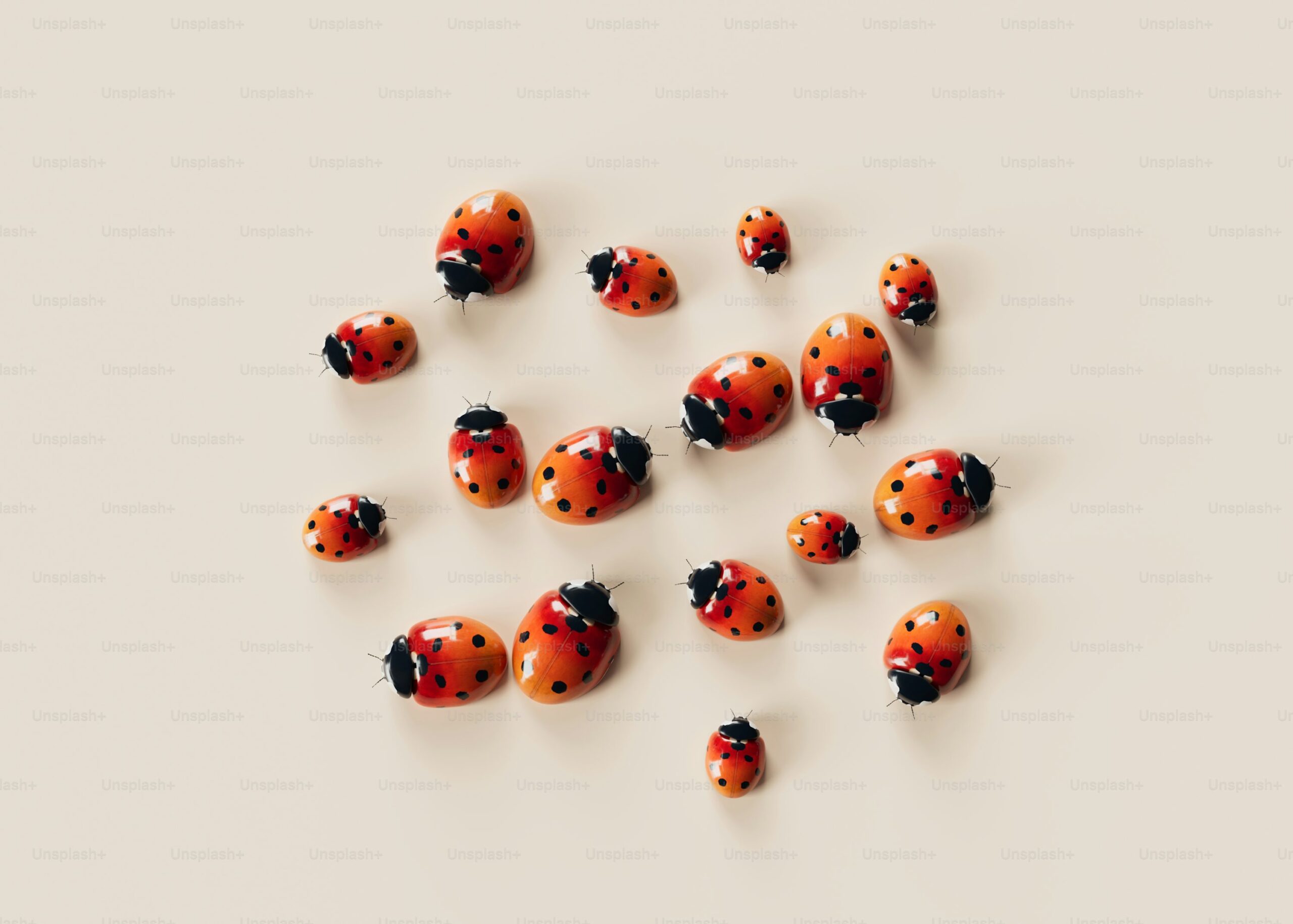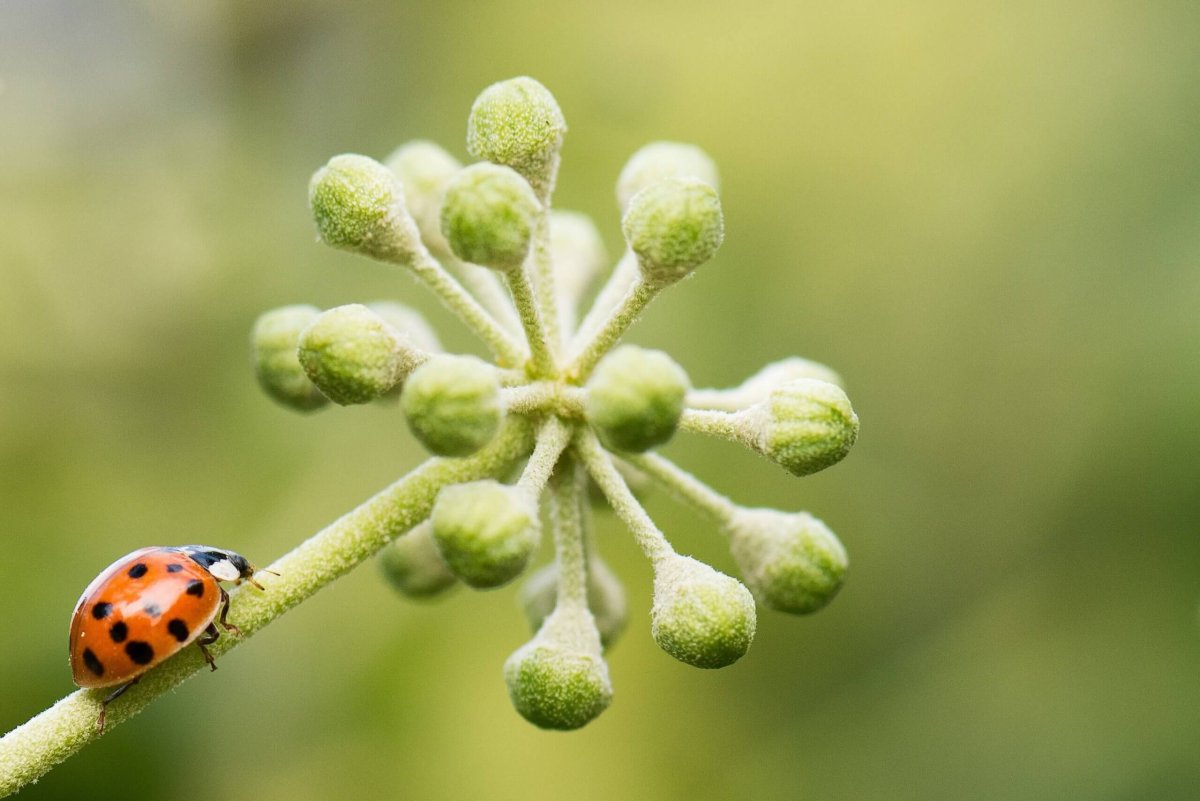Ladybugs, also known as lady beetles (Coccinellidae family), are among the most recognized beneficial insects in agriculture and gardens. Their iconic red or orange shells with black spots make them easy to identify, but beyond their appearance lies their real importance: their diet.
This article provides a complete breakdown of what ladybugs eat at every stage of their life cycle, the variations among species, their ecological role, and practical advice for gardeners and farmers who want to benefit from their natural appetite for pests.

Understanding Ladybug Feeding Habits
Ladybugs are not uniform in their diet. While most species are predatory, a few are herbivorous. Their diet changes based on their life stage, availability of food, and species. To understand their feeding, one must separate larval diet from adult diet.
What Do Ladybugs Eat?
Ladybug larvae hatch from clusters of eggs usually laid near pest colonies. The timing ensures immediate access to food.
-
Aphids: Primary prey. Larvae consume dozens per day.
-
Spider mites: Frequent targets in dry climates.
-
Mealybugs and scales: Both soft-bodied pests provide nutrition.
-
Insect eggs: Beetle and moth eggs are consumed when available.
Larvae are considered more voracious than adults. Their survival depends on rapid feeding before pupation.
What Do Adult Ladybugs Eat?
Adult ladybugs retain predatory habits but add variety to their diet.
-
Primary prey: Aphids, scales, whiteflies, and mites.
-
Secondary prey: Caterpillar eggs, leafhopper nymphs, mealybugs.
-
Non-prey foods: Nectar, pollen, honeydew, and occasionally mildew fungi.
-
Nutritional supplements: Some species nibble leaves for sterols required in reproduction.
Adult feeding is less aggressive than larvae, but adults live longer and consume thousands of pests over their lifetime.
Foods Ladybugs Commonly Consume
| Food Source | Consumed by | Nutritional Role | Examples of Impact |
|---|---|---|---|
| Aphids | Adults + Larvae | Protein & fat for growth | Control of rose aphids, pea aphids |
| Spider mites | Adults + Larvae | Protein | Reduces mite outbreaks on crops |
| Whiteflies | Adults + Larvae | Protein | Protects greenhouse tomatoes |
| Scales & mealybugs | Adults + Larvae | Protein | Protects citrus and grape crops |
| Insect eggs | Larvae | Protein | Reduces potato beetle populations |
| Nectar & pollen | Adults | Carbohydrates & proteins | Sustains adults during low prey |
| Honeydew | Adults | Sugary energy source | Keeps adults near pest colonies |
| Mildew fungi | Adults | Alternative nutrients | Survival during prey shortage |
| Plant sterols | Adults | Hormonal regulation | Enhances egg-laying ability |
Herbivorous Ladybug Species
Although most ladybugs are predators, some genera in the subfamily Epilachninae are plant-feeders.
-
Mexican Bean Beetle (Epilachna varivestis): Attacks bean crops, skeletonizing leaves.
-
Squash Beetle (Epilachna borealis): Consumes cucurbit leaves including cucumbers and squash.
-
Asian Epilachna species: Recorded on solanaceous plants like eggplant and potato.
These exceptions are important because they damage crops rather than protect them.
How Many Aphids Can a Ladybug Eat?
Scientific studies show that an individual ladybug can consume up to 5,000 aphids in a lifetime. This number depends on temperature, prey density, and species.
-
Larvae: May eat 30–50 aphids daily.
-
Adults: Average 20–30 aphids per day, higher during peak feeding.
This high consumption rate is why ladybugs are regarded as vital biological control agents.
Non Prey Foods: Why Ladybugs Eat Plants and Sugars
When pest populations are low, ladybugs do not starve immediately. Instead, they switch to alternative foods:
-
Pollen provides amino acids and proteins.
-
Nectar offers carbohydrates and water.
-
Honeydew provides a sugary supplement from aphid colonies.
-
Leaf nibbling supplies sterols required for reproduction.
Cornell research found that even carnivorous ladybugs seek sterols from plants to boost reproductive success.
Ecological Role of Ladybugs in Pest Control
Ladybugs are essential biological control agents in both natural ecosystems and farming systems.
-
In agriculture: They reduce reliance on chemical pesticides.
-
In gardens: They maintain a natural balance by eating common pests like aphids.
-
In greenhouses: They are released commercially to suppress whiteflies and mites.
How to Attract Ladybugs to Your Garden
Plants That Attract Ladybugs
-
Dill
-
Fennel
-
Yarrow
-
Marigold
-
Cosmos
-
Alyssum
These plants provide nectar and pollen, keeping adult ladybugs nearby even when prey is scarce.
Practices That Help Ladybug Populations
-
Avoid spraying broad-spectrum insecticides.
-
Provide overwintering shelters like mulch and shrubs.
-
Grow continuous blooms across seasons.
-
Maintain some aphid colonies to encourage feeding.
Seasonal Feeding Patterns
Spring and Summer
Ladybugs actively hunt prey to build energy for reproduction. High aphid populations provide ample food.
Autumn
Feeding decreases as temperatures drop. Adults consume nectar and honeydew before overwintering.
Winter
Most species enter diapause. They survive on stored fat reserves and do not feed until spring.
Facts About Ladybug Feeding
-
Some ladybugs specialize in spider mites (Stethorus punctillum).
-
Yellow ladybugs often prefer specific crops such as cereals.
-
Orange ladybugs may consume mildew fungi when prey is absent.
-
Ladybugs detect prey colonies by sensing honeydew.
-
Some species cluster on trees where aphids are abundant.
Ladybugs in Integrated Pest Management (IPM)
Farmers and gardeners rely on ladybugs as a natural pest solution.
-
Advantages: Cost-effective, chemical-free, environmentally safe.
-
Limitations: Purchased ladybugs often disperse; conserving wild populations is more sustainable.
-
Best Practice: Build habitats with floral resources and minimize pesticide use.
FAQs
Do all ladybugs eat insects?
No. Most species are predators, but some, like the Mexican bean beetle, feed on plants.
Do ladybugs drink water?
Yes. Ladybugs obtain moisture from prey, nectar, honeydew, and dew droplets.
How can I feed captive ladybugs?
Provide aphids, raisin-soaked water, or honey solution. Add pollen-rich flowers for supplements.
Do ladybugs eat ants?
No. Ladybugs do not prey on ants, but ants compete with them for aphids.
Why do ladybugs eat pollen?
Pollen supplies proteins that aid reproduction and survival when prey is limited.
Do ladybugs eat grass?
No. Ladybugs do not feed on grass blades. Herbivorous species target broadleaf plants.
Can ladybugs survive without insects?
Yes, temporarily. Adults rely on nectar, pollen, and honeydew during prey shortages.
Do ladybugs eat fruit?
Occasionally. Some may feed on soft fruit or juice, but this is not common.
Learn More: Threatened to Kick Us Out Means: Full Explanation, Usage, and Contexts
Your Topics, Multiple Stories: The Complete Guide to Expanding One Idea into Endless Narratives
Conclusion
Ladybugs are versatile eaters that play a critical role in natural pest management. Predatory species focus on aphids, scales, whiteflies, spider mites, and insect eggs. Adults also consume nectar, pollen, and honeydew. Herbivorous exceptions exist, notably the Mexican bean beetle and squash beetle. Their feeding makes them invaluable allies in agriculture and gardening. By planting nectar-rich flowers and reducing pesticides, one can attract and sustain ladybug populations naturally.

